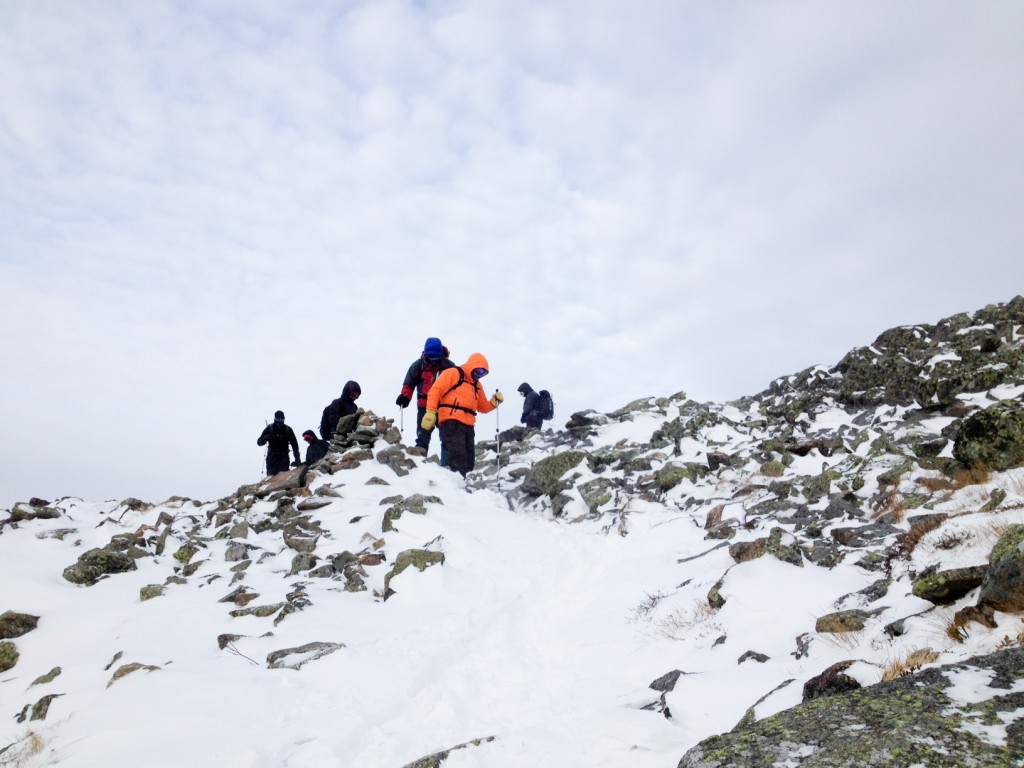
Group of Prepared Climbers on Mount Washington
The backcountry and the mountains of New Hampshire can be a dangerous place if you are not properly prepared. It is every persons responsibility to be sufficiently equipped and self-sufficient when traveling in the backcountry. By doing so, you can prevent search and rescue efforts and minimize the number of times that responders need to place themselves at risk.
Purchase A Hike Safe Card
Wherever you hike, no matter what season or whether it’s a short hike or a multi-day trek, be safe.
Follow the Hiker Responsibility Code
You are responsible for yourself, so be prepared:
- With knowledge and gear. Become self reliant by learning about the terrain, conditions, local weather and your equipment before you start.
- To leave your plans. Tell someone where you are going, the trails you are hiking, when you will return and your emergency plans.
- To stay together. When you start as a group, hike as a group, end as a group. Pace your hike to the slowest person.
- To turn back. Weather changes quickly in the mountains. Fatigue and unexpected conditions can also affect your hike. Know your limitations and when to postpone your hike. The mountains will be there another day.
- For emergencies. Even if you are headed out for just an hour, an injury, severe weather or a wrong turn could become life threatening. Don’t assume you will be rescued; know how to rescue yourself.
- To share the hiker code with others.
Develop A Solid Plan
Tell someone where you are going, the trails you are hiking, when you will return and your emergency plans.
Your hike begins before you reach the trailhead. It’s important that you research, write down and distribute your plan before you leave. Include:
- How many people are in your hiking party, their names, ages and any unique factors (medications taken, chronic diseases such as diabetes, or disabilities)
- Equipment, gear and the amount of food and water you have with you
- Description of clothing individuals are wearing
- Whether you’re hiking with an animals, such as a dog – if so, give the name and description.
- Hike start date and time
- Hike return date and time (give yourself a cushion so emergency services aren’t called if you’re a little late)
- Trailhead names and connectors
- Turn around point
- GPS coordinates
- A photo of the bottom of your hiking boot
- Discuss the plan and leave a copy of the plan with someone who is reliable and responsible, and who knows how, when and why to contact authorities
If your plan changes, call this person! You don’t want a search and rescue team sent for you if not needed.
Carry The Ten Essentials
- Navigation: Topographic map and assorted maps in waterproof container plus a magnetic compass, optional altimeter or GPS receiver.
- Sun and/or rain protection: Sunglasses, sunscreen for lips and skin, hat, clothing for sun protection. Rain jacket and pants when rain is in the forecast.
- Insulation: Hat, gloves, jacket, extra clothing for coldest possible weather during current season.
- Illumination: Headlamp, flashlight, batteries. LED bulb is preferred to extend battery life.
- First-aid supplies: plus insect repellent.
- Fire: Butane lighter, matches in waterproof container.
- Repair kit and tools: Knives, multi-tool, scissors, pliers, screwdriver, trowel/shovel, duct tape, cable ties.
- Nutrition: Add extra food for one additional day (for emergency). Dry food is preferred to save weight and usually needs water.
- Hydration: Add extra 2 liters of water for one additional day (for emergency).
- Emergency shelter: Tarp, bivouac sack, space blanket, plastic tube tent, jumbo trash bags, insulated sleeping pad.


 We are proud to work with the Department of Agriculture, the White Mountain National Forest and the Androscoggin Ranger District where we are authorized outfitter guides.
We are proud to work with the Department of Agriculture, the White Mountain National Forest and the Androscoggin Ranger District where we are authorized outfitter guides.
